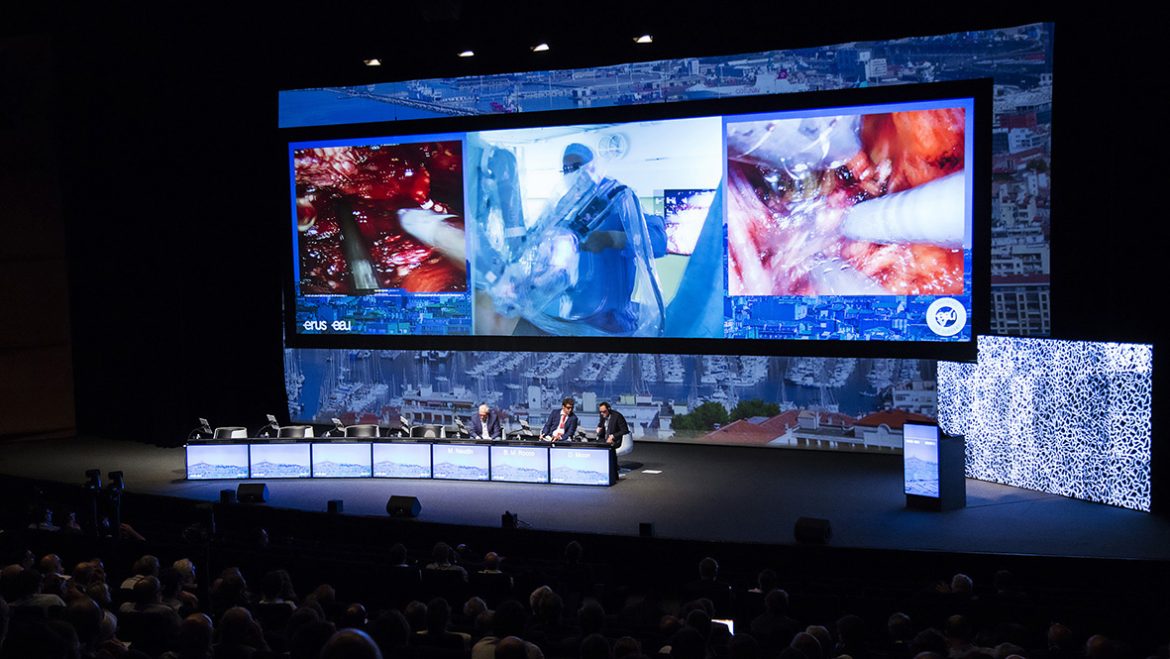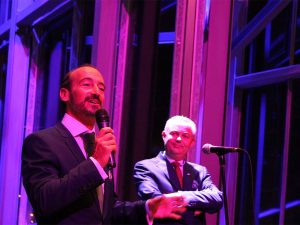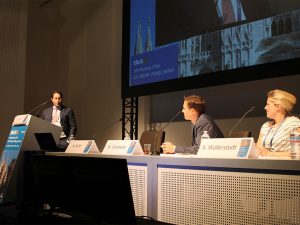“Over the past few years, the robotic community has evolved: centres are becoming high-volume, surgeons more experienced,” says Prof. Alex Mottrie, Chairman of the EAU Robotic Urology Section ERUS. “Accordingly, our annual meeting reflects these changes, offering more complex (live) cases, and new indications for a robotic approach.”
ERUS19 is coming to Lisbon, Portugal for its 16th Annual Meeting on 11-13 September, 2019. The regular scientific programme starts on September 12th, but delegates are encouraged to take part in the Technology Forum on the 11th. Other activities on the 11th include the Junior ERUS – YAU meeting for young urologists.
Courses by the European School of Urology are integrated into the regular scientific programme.
Prof. Mottrie: “We invite manufacturers and delegates both to join the Forum for New Technologies before the regular scientific programme starts on September 12th. The Forum will take place before the regular congress because we feel all these new developments deserve enough time to be thoroughly presented.”
Mottrie expect these systems to come to market in the coming two years and wants to offer manufacturers a very specific setting that allows them to update the audience and demonstrate their new technology.
New technology, new procedures
In addition to prostate and kidney surgery, other urological procedures are becoming increasingly ripe for robotic assistance, Mottrie sees. “The Elmed Avicenna robot for endo-urological indications, the Aquablation (robotic waterjet) for prostate adenoma. We’re not sure if all these new systems will stand the cost-benefit analysis, but it’s up to us as the EAU’s robotic section to assess these systems and examine their potential.”
While a variety of robot-assisted instruments is coming to market to supplement the surgeon’s armamentarium, some direct competitors for Intuitive’s widely-used DaVinci system, like Medtronic, Verb and CMR are also on the horizon. Prof. Mottrie sees a challenge not only to the current surgical systems, but also the currently established training and certification programmes.
“I think we can solve this problem. The ORSI academy, which is set to become the EAU’s robotic training centre, will offer training on all available systems. The trainee will be taught on the machine that his or her centre uses. We are working with the manufacturers so that we can effectively train surgeons to use their equipment.”
Looking ahead
ERUS19 will naturally and prominently feature live robotic surgery, state-of-the-art lectures and case discussions. Prof. Mottrie shares a look at the future of the field, and his goals for ERUS and robotic surgeons in general:
“We’re seeing more smart technologies in and around the house, why should the OR be any different? Procedures that are currently being performed manually can be done more precisely, effectively and safely when automated or robot-assisted.
Fields like endo-urology or adenoma treatment that are currently performed manually with TURP or HOLEP could potentially become robot-assisted. In future, certain procedures could become automated completely, if the robot uses 3D scan-based models that work as navigation, autonomous recognition of organs.
Prof. Mottrie also shared an informal three-point manifesto for ERUS and the future of robotic surgery in general.
“First of all, we need to convince colleagues to stop working ‘with knife and fork.’ Advanced technology exists and it will allow us to perform the same procedure in a less-invasive fashion, with less effort and more safety for the patients.”
“Secondly, training has to improve. At the moment, I feel medical training is too dependent on random things: where the resident ends up being stationed, and how much of a trainee’s success depends on the relationship with superiors. We want to move beyond the Halsted model of ‘see one, do one, teach one’, towards quality-assured training and proficiency-based progression. By rationalizing and improving training, we should be able to reduce complications, lower costs and better treat patients.”
“Finally, by specializing and performing enough robotic procedures, the high costs of new tech will pay for themselves in lower complication rate and shorter hospitalization.”





